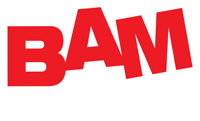This article from our friends at Hootsuite will prove helpful to anyone who is struggling to manage a Google Ads campaign on a small budget. When you’re a small business owner, there’s a lot of different types of media you can include on your media plan to promote your business.

When you’re a small business owner, there’s a lot of things you can spend money on to promote your business.
But once you’ve budgeted for that inflatable waving-arm guy, catchy retail signage, and a second inflatable waving-arm guy because your first one seemed lonely, unfortunately there sometimes isn’t much money left to drop on Google Ads, too.
The good news is, you actually don’t need to spend a lot to live large on the Google results page. It’s like Biggie would probably have if he had penned his most iconic hit in today’s modern world: “No money, mo’ search results.”
Whatever your budget, you’ll be able to reap the benefits of this powerful advertising tool.
Bonus: Get the step-by-step social media strategy guide with pro tips on how to grow your social media presence.

Source: Google Ads screenshot
Google dominates the search engine market share, with 2.5 million searches happening every second.
On average, Google Ads generate two dollars for advertisers for every dollar spent.
And the best part is: there’s no minimum budget, and you only pay when a user clicks your ad. I think this is what they call “no risk, high reward.”
If you’ve got a small budget and big conversion dreams, read on for the best tips to create Google ads that make a serious impact with every cent.
10 tips for creating effective Google ads with a limited budget
1. Set a clear objective
Before you can get specific with your conversion goals, you’ve gotta think big picture. What are your overall business goals? What are your advertising goals? Once you’ve got clarity on those things, you can narrow in on what your actual tactical action plan is.
Say you make faux-fur coats for sphynx cats. (Somebody: please do this ASAP.) Your overall business goal might be to sell 10,000 units this year.

Source: Google Ads screenshot
Your advertising goal, in that case, could be to push a buy-one-get-one-free promotion to households with sphynx cats.
Within Smart Bidding, you could then precisely target specific keywords to help you reach the audience you want (“cat is too naked”) with a maximum budget to ensure you never go over.
2. Build a great structure
Set things up thoroughly from the beginning, and you’ll be in way better shape to succeed. That means taking the time to curate everything from campaigns to keywords to ad groups to targeted location. Your gnome fan site is going to get a lot more traction if it’s showing up for searchers who live in gnome-positive cities

Source: Google Ads screenshot
They should be highly, relevantly themed and thoughtful (you made a plan in step one, remember?): no express set-up, okay?
3. Rack up a high quality score
It might sound obvious, but the best way to make sure your small budget is going far is to make sure your ads are top-notch.
Quality is the key here. Literally: Google assesses every ad’s bid amount, keywords and landing pages, and gives a Quality Score from one to 10. The higher the score, the better your rank, and the better the chances of conversion.
In a nutshell, you want to set up your ad to be crystal clear and helpful to the searcher every step of the way. Get some great tips to amp up your Quality Score here.
4. Target long tail keywords
Long tail keywords are super specific and targeted to one business. A generic keyword like “brewery” won’t target people in your neighbourhood who are actually looking for a place to “slurp some brewskis,” as they say.
Instead, try something with your city and neighbourhood, or even your zip or postal code. Specific products and services are great here too. “Brewery IPAs Vancouver Commercial Drive” will be more likely to capture the attention of someone interested in just that.

Source: Google Ads screenshot
5. Make sure your landing page is optimized
The whole goal here isn’t to just create an ad that someone clicks on. It’s to create an ad someone clicks on…and then actually finds the product or information they were looking for.
You may capture the attention of a parakeet fanatic with your “50% off bird shampoo!” Google Ad, but if they visit your site and only find conditioners for cockatoos, they’re gonna bounce.

Source: Too much time on my hands
Not only will that bait-and-switch affect your sales, it’ll affect your Google Ad Quality Score too, dropping you down the rankings.
Optimize your landing page for conversions by making specific offers that you can follow through with.
6. Don’t spread yourself too thin
If you’ve only got a few bucks to spare, spending them on 40 keywords isn’t likely to go very far. Focus on your priorities: the most profitable demographic, market area or product, and go all-in on just a specific keyword.
In other words: you want a SKAG.
Yes, I know it sounds like rude British slang, or what you might yelp if a hairless cat ran through your living room unexpectedly. But it actually stands for Single Keyword Ad Group, and this is the ideal, ultra-focused way to target the customers you want, for less.
Google itself suggests multiple keywords, but we’re here to tell you that’s actually highly ineffective.
With too many keywords in one ad group, you can’t possibly write an ad that caters to every search.
Say you run a tire company. You probably have a variety of products available. But if you set your keywords to “green tires, women’s tires, tiny tires” your ad won’t have enough room to reflect all of those options specifically.
The searcher will just see an ad that says “Winter Tires,” and might not click through. They’ll keep scrolling until they see a link that explicitly has women’s tires (tires..for her!).

Source: Google screenshot
SKAGs, meanwhile, increase click-through rates by 28%. Specificity offers clarity: users actually can clearly understand that they found what they’re looking for.
To build your SKAG, look for a medium-traffic, low-competition keyword and identify the intent of the search. In this example, forget your “green tires” and “tiny tires” keywords and just stick with “women’s tires.” Next, highlight that term specifically in your ad headline so the searcher will know they’ve found exactly what they’re looking for, click through, and buy.
Then, take your keyword and modify it with a broad match modifier (+keyword), phrase match (“keyword”), and exact match ([keyword]). And now wait for the clicks to come rollllling in! (Like a tire.)
7. Let automation work for you
Maximize your conversions with Smart Bidding and Responsive Search Ads. AI may not be able to come up with a grand advertising strategy for you, but machine learning can help increase or decrease bids on your behalf.
Automation takes into account everything from funnel stage, to relevenance, to keywords, to competitors.
Then, it makes sure your bid is increased when your ad has the best chance to succeed—or drops the bid when your competition is set to win so you’re not wasting your precious time and cash.
Oh, robots: you’ve done it again!
(Want more info about how bidding works? This AdEspresso webinar has got you covered.)
8. Embrace extensions
From your extensions tab in your Google Ads dashboard, you can add extensions directly to your ad to specify your location, products, features or sales promotions.
And. You. Should.
76% of users who search for a nearby service wind up visiting that business that day. With local searches increasingly happening on mobile while people are out on the town, you’ve got to wave the flag that you’re nearby and ready to help.
Toss a phone extension on your ad for your unicycle repair shop. People can easily click and call and ask if you can help them weld two unicycles together into some sort of innovative, hybrid duo-cycle.

Source: Google screenshot
Or, if you’re a wholesaler of leopard-print toilet paper, add an affiliate location extension. This will share front-and-centre exactly which retail shops carry your rockin’ rolls.
9. Think negative
Google Ads also offers the options to input negative keywords: words that you don’t want to be affiliated with.
For example, if you sold dolphin keychains but not glitter dolphin keychains, you wouldn’t want to pop up in results for the latter. All the sparkle-enthusiasts out there will only be disappointed when they click through.
To discover how people are accidentally searching you, check in on your Search Terms report. Here, you’ll be able to find the irrelevant queries that are leading people to you, and add them to your negative keyword list.
10. Measure everything
How are people finding your site? What pages are popular, and what searches are bringing them there? Your analytics have the data you need to measure success and patterns.
And over on Google Ads itself, you’ll find metrics that suggest why your impressions, click-throughs or costs might have changed.
Take this information, analyze it, and use it to inspire your next great advertising experiment.
While these tricks for making the most of a small budget are true today, Google Ads is being updated all the time. Tomorrow, there may be even more ways to optimize those dollar-dollar bills, so you can spend less on advertising and more on creating the dancing tube girl group of your dreams.
Would you like to receive more content like this. Sign up for our mailing list:
